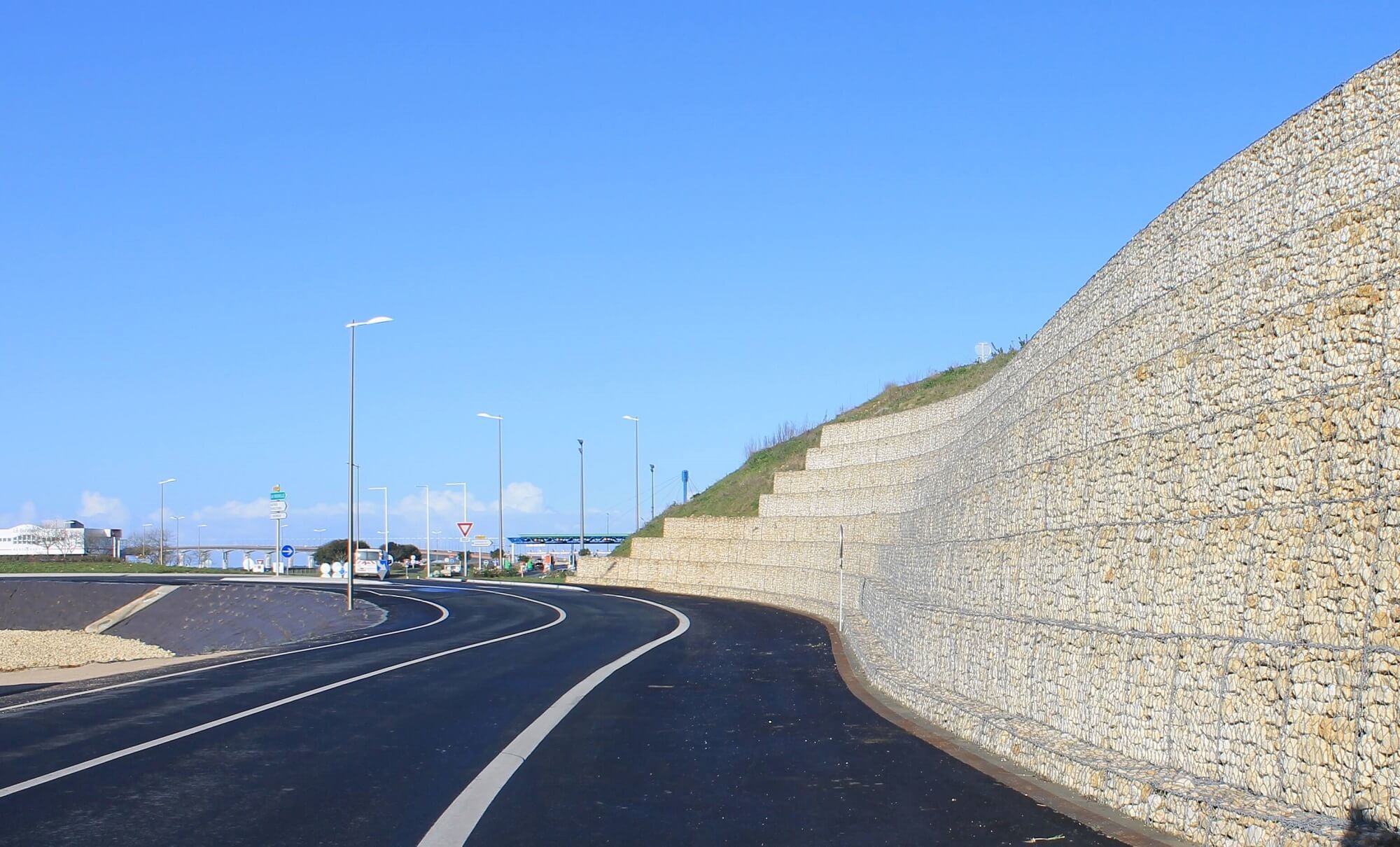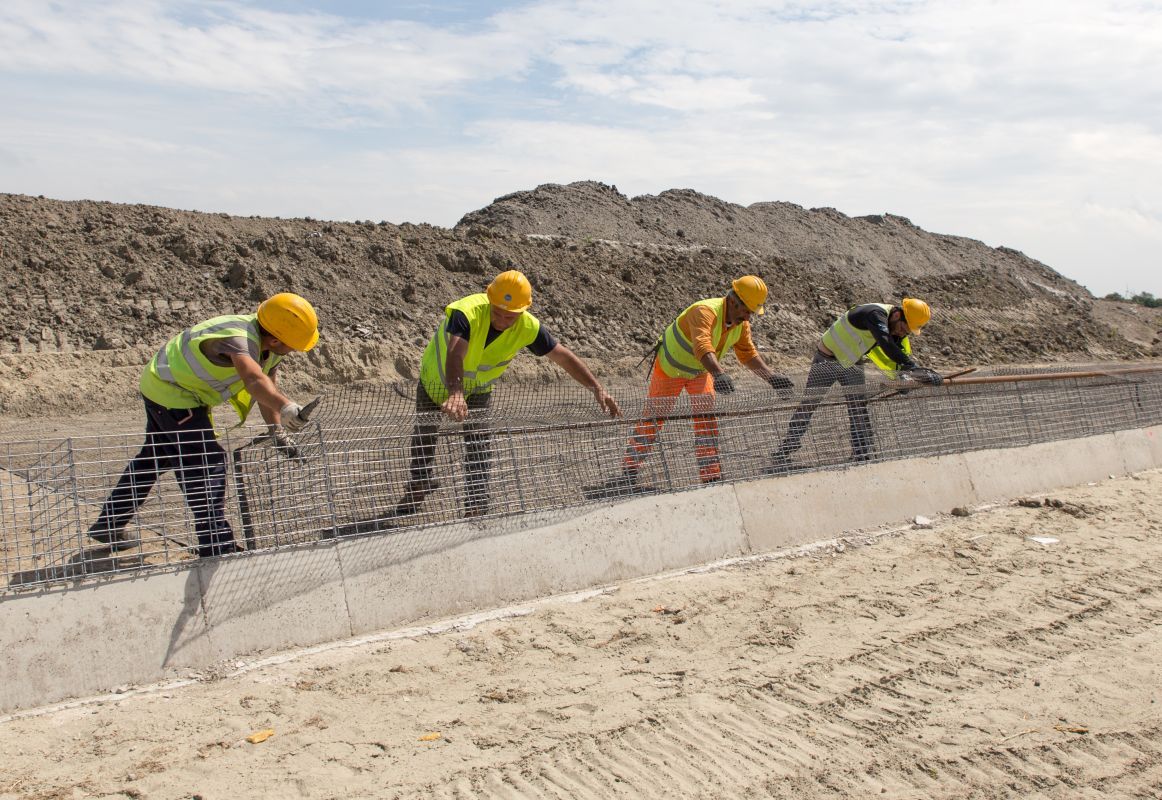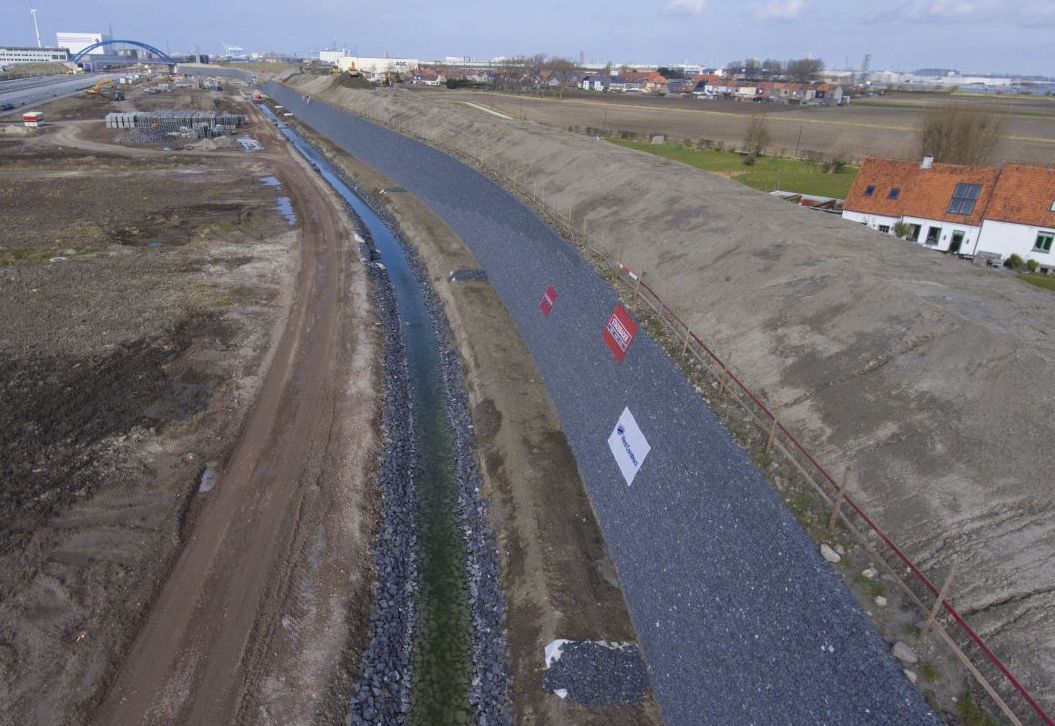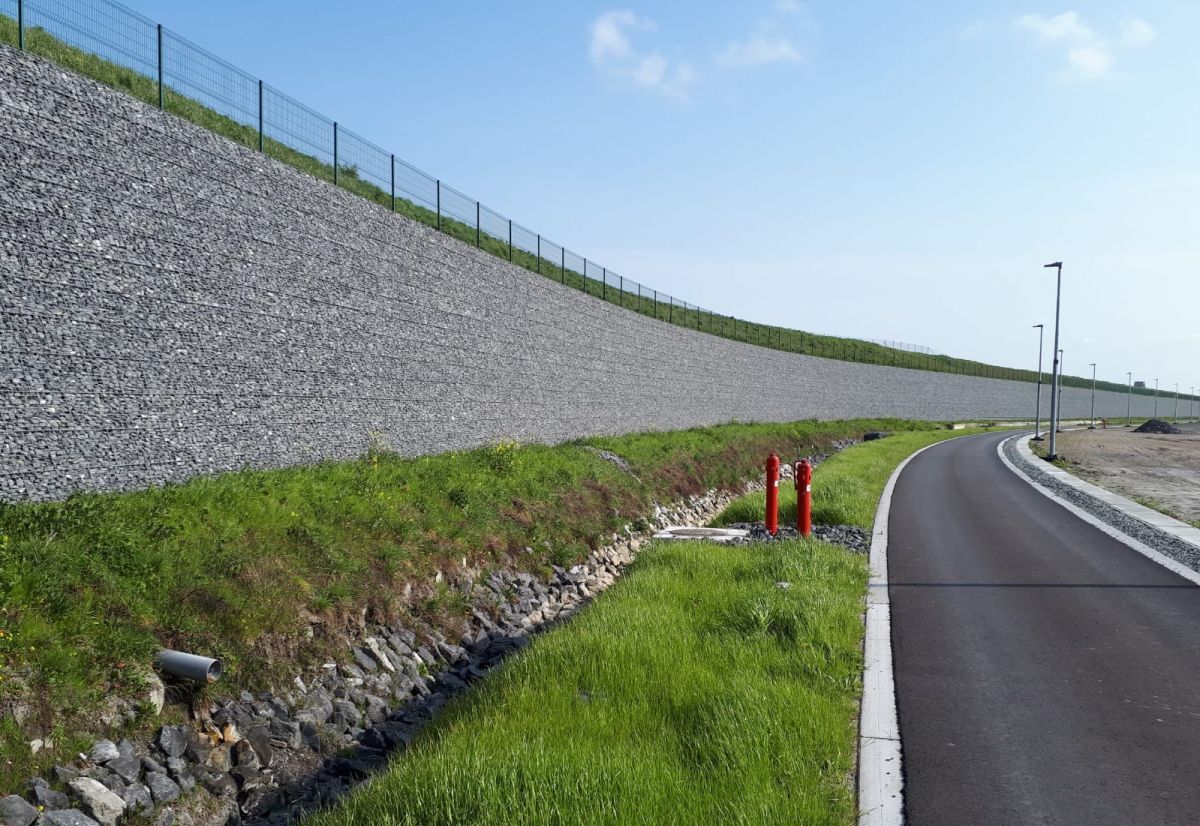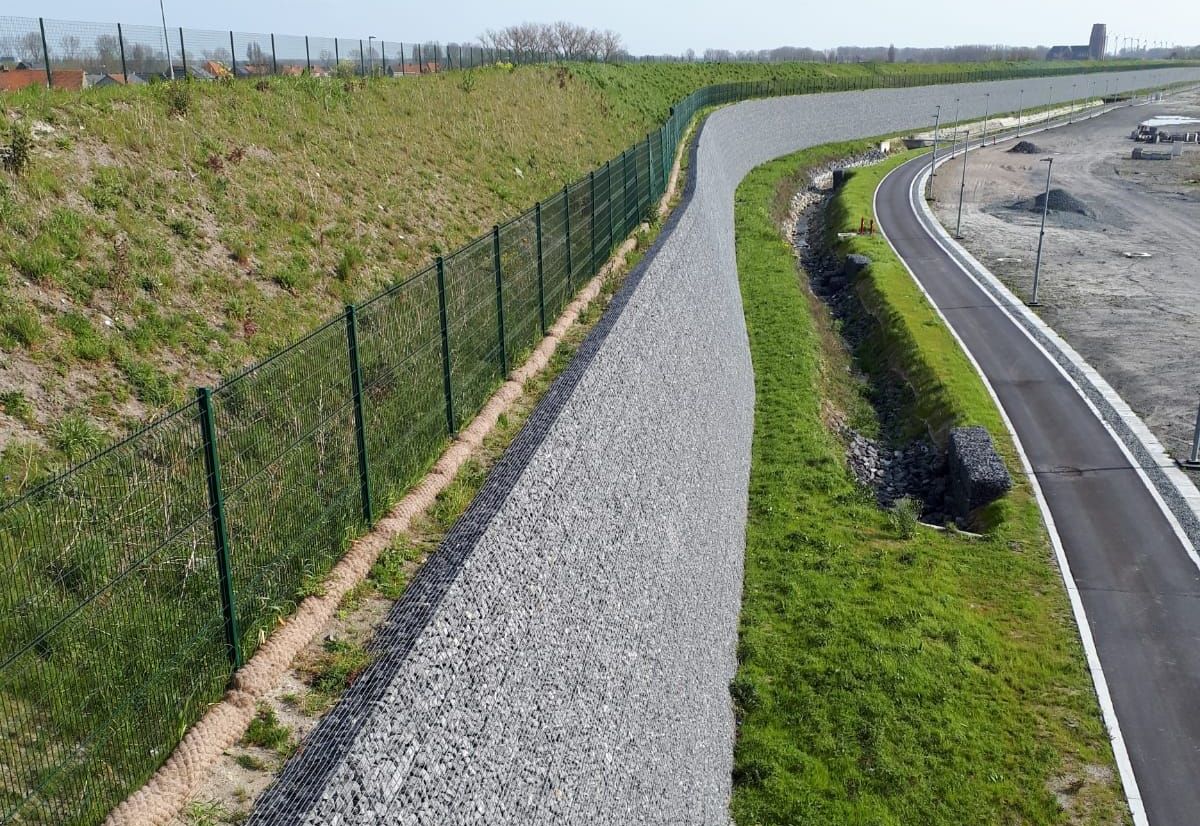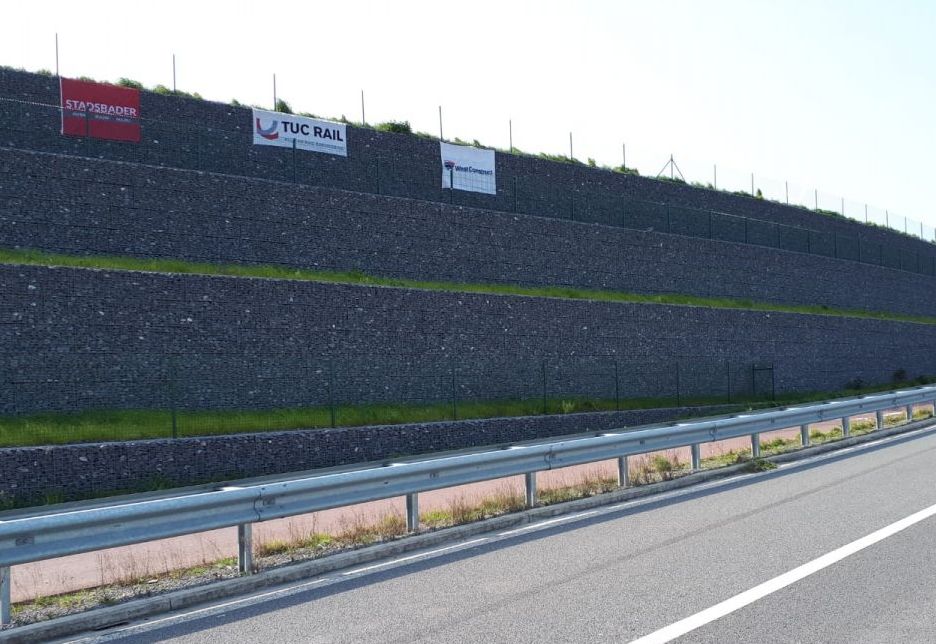Reinforced Soil Walls and Slope Reinforcement
2020
ZEEBRUGGE - BRUGES - Belgium
Texion Geosynthetics NV
WEST-CONSTRUCT & STADSBADER
TUC-Rail
SPOORLIJN 51A – ZWANKENDAMME
Problem
The railway line 51A is a Belgian railway line that connects Bruges with Zeebrugge. The line is 9.8 km long and was built to open up the port of Bruges-Zeebrugge (completed in October 1906). Besides freight transport, it was also intended for passenger transport to and from Zeebrugge and Heist. In 1983 this section was in turn replaced by the new line 51B as a result of the expansion of the port in Zeebrugge. Approximately 1.5 km was retained as industrial track. On 3 March 2010, Infrabel started the construction of the ‘Ter Doest’ railway curve, also known as the ‘Arch of Ter Doest’. This connecting curve between the Bruges-Knokke line (51B) and the Bruges-Zeebrugge line was put into service on 5 November 2012 as line 51B/1. It should facilitate the shunting of trains with wagons from the western and eastern side of the Boudewijn Canal. At the opening of the station Zeebrugge-Strand in 2001, the branch line running to Zeebrugge-Dorp station has been renumbered to railway line 51A/1 Zeebrugge-Vorming – Zeebrugge-Dorp. Due to the increased volume of trains running along the new railway, the local authority planned a reinforced soil embankment that should protect the local villages from the noise coming from the railway.
Solution
The tender specifications were very strict asking PVA geogrids that were provided by the local partner Texion Geosynthetics NV, while Maccaferri supplied 40.000 welded panels for the front welded gabions. In fact, the local authority was interested to carry as little maintenance as possible by cutting grass on the railway side. on the other side of the embankment, the choice has been made to pay attention to the architectural aspects of the wall to use it also as a camouflage for the technical infrastructure. The installation took approx. 12 months.
Used Products
